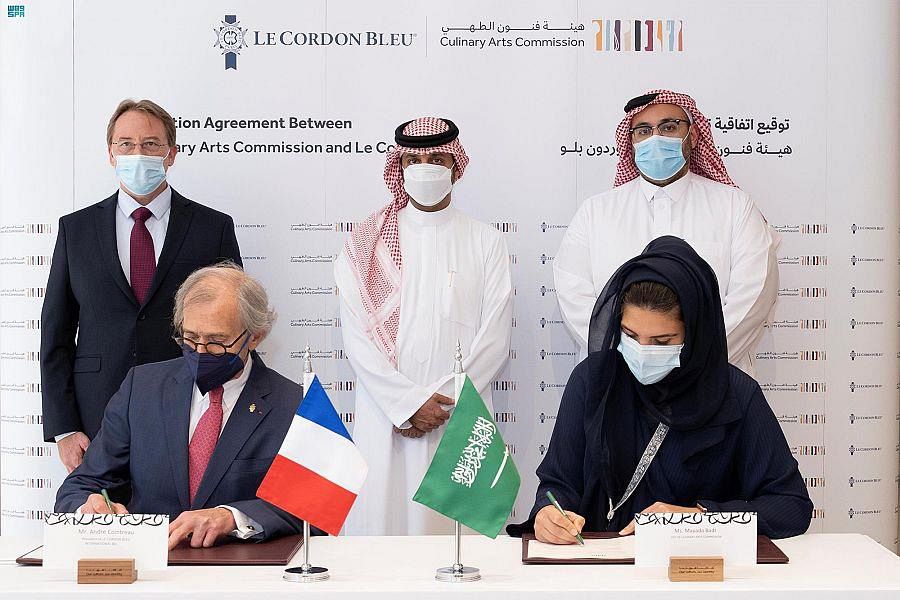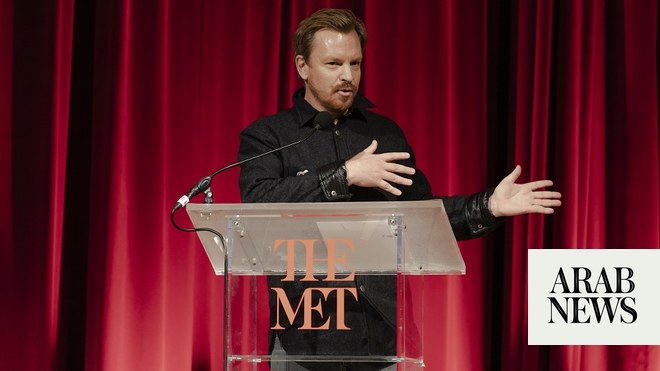
DUBAI: The Jameel Arts Center in Dubai has surrendered itself to the creative power of the UAE’s youth in a bid to raise awareness of budding talent on the local scene.
For the latest updates, follow us on Instagram @arabnews.lifestyle
Titled “The Youth Takeover,” the show, which wrapped up on Sunday, boasted 20 artworks by new talent that explored concepts of nostalgia and the inner child. Mediums included two- and three-dimensional illustrations, paintings, audiovisual works, performances, workshops and film screenings.
Of particular note were eight new commissions by artists and curators from the UAE, Egypt, Philippines, Pakistan, Palestine, India, Iran, Saudi Arabia and Chechnya.
“Art Jameel has always had a particular focus on youth and developing homegrown talent from the ground up, and in innovative ways that complements and fills gaps between and around formal education,” Antonia Carver, director at Art Jameel, told Arab News. “Before opening the Jameel Arts Centre back in 2018, we knew we wanted to have young people at the heart of the institution, and to create a program that enabled us to listen to and learn from youth, and that gave these talented and driven young creatives real agency.”
Carver said Art Jameel plans to stage a similar event at the recently opened Hayy Jameel creative hub in Jeddah in the future.
Jameel’s third annual “The Youth Takeover” was titled “Smol” and dedicated to an exploration of the trials and tribulations of growing up, ideas of nostalgia and the inner child. It was curated by eight young creatives or Youth Assembly members — Alexis Javero, Anita Shishani, Farah Fawzi Ali, Lubnah Ansari, Raheed Allaf, Rashid Almheiri, Shama Nair and Sree — all under the age of 25 from across the UAE who were selected from several hundred applications and were led by independent curator and Assembly 2020 alumnus, Daniel H. Rey.
“Metaphorically and stylistically, ‘Smol’ is an opportunity to color outside the lines, bridging dreams with reality, while confronting constricting rules and rituals,” said the Assembly members in a joint statement.
In collaboration with the Art Jameel Learning team, Rey curated and facilitated a year-long learning program with the aim of nurturing and fostering artistic youth leadership.
Young artists raised in the Gulf were encouraged to examine questions regarding ideas of home, intergenerational histories, community building, dreams, language, and mental health.
“After multiple weeks of research in non-European languages, questions about the so-called Global South and the responsibilities of curators in our shared context, the Assembly received a key question: How does the youth practice society?” Rey told Arab News. “For exploring this question treating society as subject of inquiry, the Youth Assembly moved onto having self-led sessions discussing different urgencies — pressing themes with potential for a robust exploration through an exhibition.”
The Assembly visited and researched the Art Jameel Collection as well as the Dubai-based Endjavi-Barbé Art Collection, which focuses on young artists from inside and outside Iran.
“The exposure to these collections gave a sense of direction to the thematic thinking, revealing to the Assembly that their questions, ideas and lived experiences could be grouped and explored through the lens of the inner child and the experience of feeling small,” said Rey.
“As curator-tutor of the program having worked with the Youth Assembly on this experience, it is fascinating to begin identifying that, while each human life is uncertain, we have all certainly had a childhood, regardless of how it played out. This childhood may well continue within our adult selves,” he added.
For example, artist Raheed Allaf from Saudi Arabia created “Shoofeeni,” a short experimental film installation in which she investigates a VHS tape from her third birthday prompting a conversation between the filmmaker and her younger self.
“To see myself, at three years old, proclaiming that I am a Barbie while looking at my reflection was very telling. I couldn’t help but think ‘wow, I’ve been living up to unrealistic standards since three?’” she told Arab News.
“I would think that would be too early an age to start feeling the crippling pressures of performing womanhood. So, I had the urge to dissect it, and create a work where I, in a way, have a conversation with my younger self — hoping to address self-reflection through literal reflections.”
Allaf’s film, like the theme of this year’s event, explored how the artist’s childhood and self-image building continues to affect her adulthood. The film is about the performance of womanhood but also poses questions, as media prompts us to do, about the identities of both performers and directors, and how these roles have often become interchangeable in today’s rapidly changing digital landscape.












